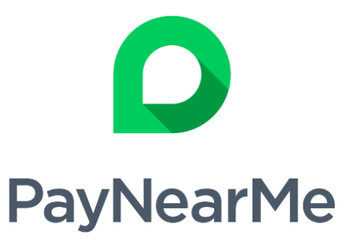By Jill Bohlken, Director of Enterprise Sales, PayNearMe
While most of us think “customized” means best-of-the-best, that doesn’t always hold true for technology solutions, including payments platforms.

A customized payments solution may offer some benefits for billers, such as savings on transaction fees, but it’s the most resource-intensive approach. On the other hand, a basic, one-size-fits-all solution may fall short of expectations if it fails to address essential functions and processes the business uses regularly.
Fortunately, there’s a practical and cost-effective third option: a highly configurable payments platform that adapts to the organization’s specific needs. Even if the company uses customized technology solutions for other business areas, it makes sense to add a configurable payments platform designed and managed by experts. This approach allows the business to create a personalized feel and configure functionality in its payments experience at an affordable cost while delivering a frictionless customer experience every time.
Customized isn’t always best
No one disputes that a fully customized payments solution provides a tailor-made platform specifically designed for a company’s needs. However, customization has some significant downsides:

- Expensive to build: Most businesses don’t have IT staff available and experienced enough to design a payments platform from scratch. That means they must contract with a software developer, which can prove enormously expensive, depending on the scope of work.
- Difficult to upgrade: Billers are responsible for their upgrades or updates with a customized solution. That leaves most companies perpetually behind consumer and industry trends, including the emerging payment types and channels consumers prefer.
- Challenging to maintain: A customized solution requires dedicated technical staff to resolve glitches and address security challenges. Companies must also be diligent in interpreting and complying with regulatory requirements, such as PCI and NACHA, or hiring an outside vendor to manage those efforts.
Best of Both Worlds
With the right payments platform, billers can avoid the downsides of customization and get the functionality they desire. Look for a configurable SaaS payments solution where the payments platform provider handles updates and upgrades. This frees the billing company’s staff to focus on other business-critical tasks.

With this approach, there is no need to worry about keeping the product up to date, free from system glitches, protected against risks, and compliant with industry regulation – that’s all built-in. Case in point: When NACHA changed its rules on validating account ownership in March, companies with SaaS payments platforms received that update immediately.
Bottom line: A configurable SaaS payments platform gives billers the best of both customization and standardization. It’s a cost-effective option that saves time and money yet is agile enough to keep pace with evolving company needs and market factors.
Putting Configurability to Work
When evaluating configurable payments platforms, look for expertise leveraging these three powerful configuration options:
- Adjustable features to align the payment experience with the biller’s brand: A SaaS payments platform provider that offers configurability can add details and features that incorporate the look and feel of the company’s brand in customer-facing areas of the platform, such as brand colors, logos, and key language and terminology.
When done right, these configurations make the payments interface a seamless extension of the company, regardless of where and how customers choose to pay, adding to a positive customer experience. In addition, having cohesive brand touchpoints across all customer interfaces helps guide payers through the entire payment funnel, so they don’t get frustrated or confused and abandon payment.

- Configurable parameters to tailor the payments process: Configurable parameters let billers tailor elements of the payments platform without building a new solution in its entirety. Payments platform providers can help billers import or create parameters or turn specific data fields on or off so customers and agents have the information they need when they need it. Examples of configurable parameters include:
- Company-preferred payment types (e.g., cash, debit, credit, ACH, Apple/Google Pay, Venmo, Paypal).
- Allowable payment channels (e.g., web, text, IVR, walk-in cash payment, downloadable wallet card, agent-assisted).
- Customer service or customer screen views that show additional, helpful information to provide context; for instance, a detailed mortgage payment breakdown might include unpaid balance, interest rate, loan terms, and foreclosure status.
- Engagement text and email reminders in both English and Spanish.
In a recent bill payments study, 45% of consumers said they would appreciate receiving payment reminders, and 77% said it would be helpful or very helpful to have access to their entire bill — not just the payment amount — when paying bills online. Configurable elements like these address customers’ needs for more assistance in remembering and completing payments.
- Business rules to reduce risk and increase automation: At the next level of complexity, a payments platform provider can create logic-based business rules — “if / then” statements that automate sequences of operations and solve complex business challenges.

Business rules mitigate risk by allowing the biller to set standards and direct payment behavior for some or all customers. Business rules also reduce operations costs by allowing billers to automate steps that increase on-time payments. Some examples of logic-based business rules include:
- Applying minimum and maximum payments to guard against factors like users typing errors when entering payment details or the biller being charged excessive interchange fees
- Controlling the amount and number of payments to protect against fraud
- Limiting acceptable payment types for customers with a history of NSF
- Setting parameters around payments to prevent overpayments and reduce ACH returns
- Restricting payment to only verifiable tender types once a loan becomes delinquent.
A payments platform provider should help companies determine which business rules will address their unique business requirements, both now and as their business evolves. For instance, the company may need the platform to adapt to new integration methods as they grow, such as moving from file-based integration to API real-time posting that updates their system automatically.
A Future-Proof Payments Approach

Payment types and channels grow and change at the pace of technological innovation — in other words, constantly. That’s why even the best-customized payment solution will become out-of-date the moment it goes live. It’s the nature of the beast.
Conversely, a configurable SaaS payments platform provider can stay at the forefront of market developments and help businesses configure their payments platform and flows accordingly, with options that make sense.
Businesses no longer have to settle for “good enough” – a fully-customized or lite out-of-the-box payments solution. Instead, they can get the best of both worlds with a feature-rich, configurable payments platform that enables seamless, efficient payments today and every day in the future.
About the Author

Jill Bohlken is the Director of Enterprise Sales and Mortgage Strategic Lead at PayNearMe. She partners with lenders and mortgage servicers to help automate the payments and collections processes and increase self-service and customer payment satisfaction by allowing their borrowers to pay how, when, and where they want. Jill has over 20 years experience in mortgage servicing, including strategic roles at GMAC Mortgage and Ocwen, focusing on solving problems within the payment processing space and continuing to drive up self-serve transactions while driving down operating costs.
Recent PaymentsNEXT news:
TransUnion: Shipping fraud (+780%) led digital fraud growth in 2021

